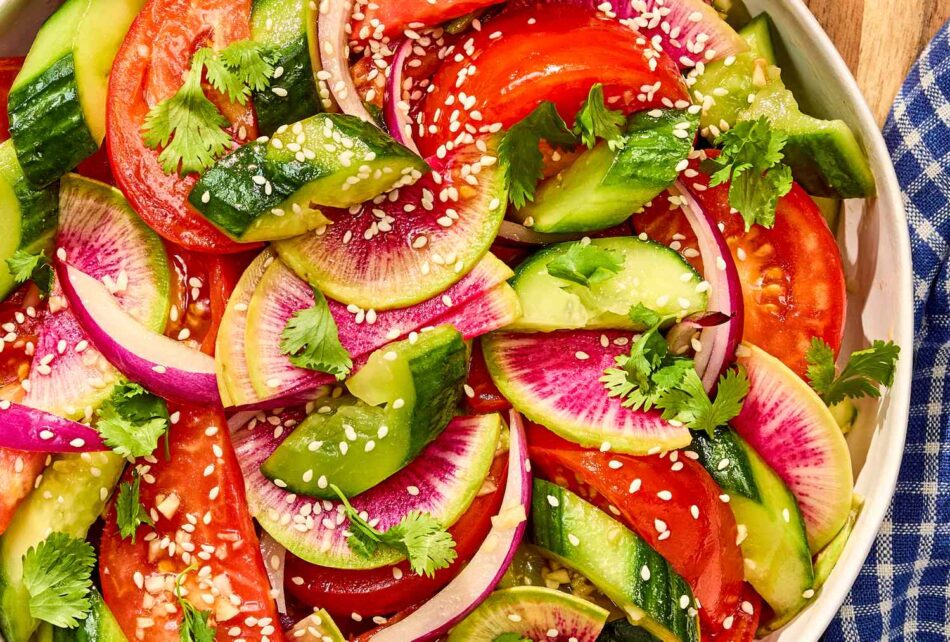As a second-generation Chinese American, blending flavors from my cultural heritage with the ingredients of my upbringing has always been a way to stay connected to my roots. Through my work as a chef, I started merging dishes together—think Cantonese salt-and-pepper fried chicken sandwiches, soy sauce deviled eggs and bacon cheeseburger potstickers, to name a few. This experimentation led me to smashed cucumber and tomato salad, an idea born from one summer harvest, and a way to incorporate fresh, garden-grown tomatoes.
The popular Chinese smashed cucumber salad and the Southern cucumber, tomato and onion salad are different in flavor and technique. The juxtaposition in settings where one enjoys the dishes is an experience I felt as a second-generation immigrant—eating the former as an appetizer before an array of stir-fries at the family dinner, and the latter at a childhood friend’s poolside with grilled hot dogs, burgers and potato chips. While these dishes were always separated by culture, I brought them together thanks to one similarity: the refreshingly crisp and juicy cucumbers.
Smashing the cucumbers releases their juices and enables the garlicky soy dressing to easily cling onto the craggily uneven surfaces. Simply slicing them won’t make them as tasty. While tomatoes aren’t normally part of the Chinese salad, they add a burst of umami and sweetness that helps balance the flavors.
Aside from the cucumbers and tomatoes, watermelon radish adds a nice textural contrast with its crispness. Its flavor, milder than a regular radish, lends reprieve to the more intense flavors of the other components. Plus, watermelon radishes, aptly named for their vibrant color, add a beautiful pop of pink and green to the dish. If you can’t find watermelon radish, omitting it is fine.
The soy dressing adds depth of flavor to the salad. Chinkiang vinegar is a Chinese black vinegar used in many dishes, from dan dan noodles and chili oil wontons to a simple dipping sauce for dumplings. Here, its versatility adds that special something missing in your salad, imparting a combination of slightly sweet, acidic and tangy flavors. Chinkiang, also spelled Zhenjiang, vinegar can be found in most Asian grocery stores. If you don’t have access to Chinkiang vinegar, rice vinegar will do just fine and is found in many major grocery stores. The flavor profile will be slightly different, as rice vinegar is more subtle, but won’t compromise the integrity of the dish.
While the flavors of this recipe are familiar to me because of my Chinese heritage, it may be a new and exciting twist for you. I’d like to think fusion dishes such as these enable us to share our culture with everyone, and within any setting. I don’t believe changes to tradition compromise a dish’s integrity, rather it is adaptive to the environment and reflective of my experiences. So, enjoy the dish poolside with friends, or at the dinner table with family—either way it’ll become a staple of your summer meals.
Photographer: Robby Lozano, Food Stylist: Torie Cox, Prop Stylist: Joshua Hoggle.









